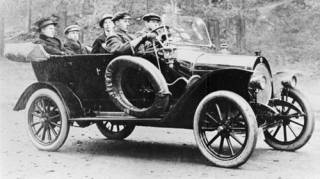Culture and Research Archive
 The extensive tradition archives are situated inside the Faculty of Social Sciences. The collections include over 20,000 hours of sound recordings, about 200,000 photographs, records, musical instruments and manuscripts. The archives of the Faculty are one of the largest folklife archives in Finland.
The extensive tradition archives are situated inside the Faculty of Social Sciences. The collections include over 20,000 hours of sound recordings, about 200,000 photographs, records, musical instruments and manuscripts. The archives of the Faculty are one of the largest folklife archives in Finland.
The collections of Tampere University Culture and Research Archive are primarily used in the research and teaching of the Faculty. The University of Tampere as a whole and the schools of the district also use the archives. Everyone looking for information may use the archives and, on the whole, the number of the users is great.
Collection of manuscripts
The collection of manuscripts consists of heterogenous material varying from documents to letters and memoirs. In addition to the documents of private persons the collection contains records of various associations and written answers to many kinds of questionnaires concerning different traditions.
One part of the collection consists of letters and postcards dating from the Second World War years. The collection includes more than 40,000 letters and postcards.
The manuscript archives contain a collection of music. The archives also include a record collection, and in the Museum of Traditional Folk Instruments, Kaustinen, its instrument collection is on show.
Photograph archive
The photograph collections of the Culture and Research Archive are one of the largest in Finland. The collection consists of some 200,000 pictures which are mainly filed as negatives.
The collection includes some very interesting glass negatives the earliest ones dating from the end of the 19th century. In addition, in the collection there can be found reproduction negatives of photographs taken by so-called village photographers during the first decades of the twentieth century (1910-1940).
Material was collected practically everywhere in Finland, but the areas of Pirkanmaa and Pohjanmaa are best represented. In the 1980’s material was collected even outside the national borders. Nowadays it is mostly students and researchers who gather material for the collections. Some material is also donated by outsiders.
Sound archive
The sound archive consists of two collections: a so-called A-K collection and a general collection which is constantly growing. The oldest recordings of the A-K collection date from 1941.
The A-K collection consists of recordings made by Professor Erkki Ala-Könni. Ala-Könni was an eager collector of material and his work was not restricted to folk music. The recordings contain oral tradition from shipbuilding to fairytales and from popular beliefs to motorization.
Most of the material in the general collection was collected by students during their fieldwork courses. Especially in the years 1965-1980 ”Ala-Könni’s research groups” travelled around the country. The labour movement, association activities, municipal life, agriculture and traditions connected with festivals, children’s games and amusements were among the most common research subjects.
